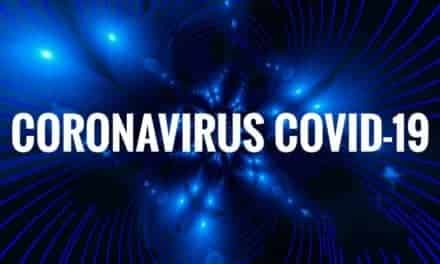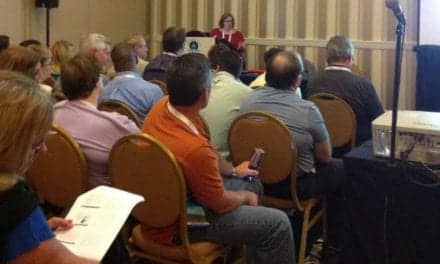 Challenges abound in the healthcare arena, and professionals who serve as radiologic technologists are not immune. The American Society of Radiologic Technologists (ASRT of Albuquerque, N.M.) is engaged in meeting increased demand for cost-effective, high-quality care and ASRT CEO Lynn May, CAE, leads the charge.
Challenges abound in the healthcare arena, and professionals who serve as radiologic technologists are not immune. The American Society of Radiologic Technologists (ASRT of Albuquerque, N.M.) is engaged in meeting increased demand for cost-effective, high-quality care and ASRT CEO Lynn May, CAE, leads the charge.
May spent two years in the U.S. Department of Labor and three years in the White House during President Gerald R. Ford’s administration. He developed extensive experience in healthcare policy during the five years he worked at the federal level as deputy assistant secretary for public affairs at the Department of Health and Human Services and as associate administrator for external affairs at the Health Care Finance Administration (HCFA).
Additionally, his background covers 20 years of service as a high-ranking executive in healthcare associations, including administrator for legislative programs at the American Health Care Association, executive vice president at the American Academy of Physician Assistants, executive vice president and CEO at the American College of Cardiology and executive vice president/director of marketing and resource development at the American Psychiatric Association. He assumed his current position at ASRT in November 1997. He is responsible for the overall management of resources and the 70-member staff, as well as serving as a primary spokesperson for this 85,000-member professional organization.
ASRT provides its members with educational opportunities, promotes radiologic technology as a career and monitors state and federal legislation that affects the profession.
May spoke with Medical Imaging about the issue facing radiologic technologists, such as the current labor shortage, and their place in radiology practice.
What current issues face RTs in practice?
Healthcare has become a different world over the last 20 years. RTs became involved in the field, because they have a technological bent, but like many other healthcare people, they’re interested in helping people and interacting with patients. So, they got into a field that seemed pretty secure, productive and meaningful. With the advent of reduced reimbursement from the government and managed care in the private sector, it has changed the environment considerably. As a result, many RTs see increased workloads and higher patient loads. They’re trying to do more with less.
In the first part of the 1990s, there was a glut of RTs. People had difficulty finding jobs or changing jobs. The period before that, in the mid to late 1980s, there was a shortage. Now, we’re seeing the shortage come back again, so the environment has been rather chaotic. Because institutions and employers have seen reimbursement racheted down, there hasn’t been a lot of money for salary increases or benefits. Many RTs have seen support for their educational opportunities reduced, as institutions look for ways to save money. It is a more difficult world, particularly for people who have been doing this for 20 or 30 years. They’ve had to acquire new skills. Many of them have become proficient in more than one discipline.
They’ve had to adjust to new technology, but I think they enjoy that aspect. The real challenge I think for them is to meet the needs of their employers and to try to achieve recognition in their institution, and with that appropriate salaries and benefits.
Some are looking at advance practice and we’re beginning to discuss that with a number of organizations, as to what would be an appropriate level of advance practice for RTs.
What types of advance practice opportunities are available to RTs?
Increasingly, I think — and this may be a generalization — you’re beginning to see opportunities for RTs in the clinical and management field, somewhat analogous to nurse specialists. Making sure the patient flow is appropriate, reviewing images before they go to radiologists and, in some cases, doing co-reads, but that is somewhat limited at this time. We want to engage in dialogue with administrators, physicians and radiologists to see what would be an appropriate role for RTs in the future. Then we would want to make sure the education system is ready.
What types of educational preparation would be necessary as additional educational requirements?
One of the problems is that there are many levels of entry into the profession and the educational ladder has not been standardized. Part of our Education Master Plan is to require that an associate’s degree be at the entry level of education, and then a baccalaureate degree for higher level of activity, either radiation therapy or for some sort of advance practice. Perhaps in the future there will be some level of master’s degree as well. We’ve seen nursing and allied health professions take this approach as the market has demanded more. We’re trying to see what the market needs and to work with other professionals to make sure it is done appropriately.
There has to be some sort of a career ladder, if you’re going to attract people into the profession. It just doesn’t work any more for people to come into something and expect to do the same thing 20 or 30 years later. I think it’s an important recruitment tool to have the opportunity to advance to a higher level.
Currently, there are many people in the field without an associate’s degree, correct?
That is correct, but within the next 10 years, many of those people will be gone. You have people who entered the profession 20 or 30 years ago with one year’s training. You have others who are coming into the field with a baccalaureate degree. Probably through experience, certification and continuing education, they’re all meeting a certain level of knowledge. There is a cohort factor going on here.
We’re looking at the next 10 years: What is going to be required of the individual in the future? We think it is a higher level of education that is more attuned to liberal arts and more attuned to interaction with other professionals. We see the development of self-directed teams becoming important in healthcare where each member has some knowledge he or she brings to the field, whether it’s nursing or medical imaging or primary care.
The biggest factor, of course, is the advent of information systems and PACS equipment. Because everything will be integrated and there will be a lot of data available for analysis, I think this will change the nature of the work itself. I think radiology is one of the primary points of entry for this kind of technology into the healthcare field. It is the most susceptible to automation and it seems to be moving fairly quickly.
How are you addressing issues of labor shortages in the field?
We’re working with the Summit on Radiologic Sciences and Sonography. The coalition addressed these issues in 1980s and now has been re-vivified to address the new shortage. There are about 15 organizations that are either members or part of the Summit. All of the radiologic science organizations are involved. The physician organizations, the American College of Radiology, the American Society of Therapeutic and Radiation Oncology (ASTRO) and ASRT are doing outreach to hospital organizations as well to address the issues.
What I’m developing right now is work force development, which is basically education — both formal education and continuing education to supply the skills and knowledge that our people need to meet the challenges of the future.
We’re also looking at workplace reform, which means finding ways of making it more attractive area to work in, to increase productivity and to do the job we’re not doing now.
In some ways, it is counterintuitive, because we’re saying there is a shortage, but you have to increase the educational level during that shortage. If it is not perceived as a profession, if it doesn’t have the professional nature to it, if you don’t get a degree when you go through preliminary education and an opportunity to find a job, if the salary and benefits are too low, or if there is no opportunity for advancement within the system, you’re just not going to attract people.
What else are you doing to address challenges your members’ face?
We’re going through a major strategic planning initiative right now looking 10 years out, because 2010 is when things may change drastically. The baby boomers will start to retire and use their IRAs to live on. They’ll enter the Medicare rolls and, at the same time, our members will start retiring in great numbers. So, we think that is an appropriate focus for us in terms of the strategic aspects of re-tooling the profession and making sure the organization can meet these challenges.
How does the filmless environment change the RT workload?
For workers, it is less important to do the piece work as it is to understand the entire system and intervene and make changes that are productive.
Somewhat to the surprise of some of our members, we’re beginning to talk about productivity. We need to find a way of using the whole system to increase productivity, to increase the number of patients and to enhance the quality of imaging that is used for diagnosis and treatment. That’s the only way I think there are going to be sufficient resources to make these other things happen.
How do you increase productivity in radiology?
We look at how models of other industries, such as the auto industry and the airline industry, have found ways of increasing productivity. Usually, it is the relentless involvement in quality improvement. That always brings some effort to integrate the workers into the process itself; for them to use their talents and their knowledge in such a way that productivity is increased. Of course, the automation itself provides the tools to do this, but the organization is just as important. To effect a radical change, a productivity revolution in that environment is difficult to do, but we’re beginning to see signs of it and I think it will come about. I think it will require collaborative effort from a number of organizations to make this happen.
It is looking at the systems themselves — taking a systems approach, following that through and finding the problems and bottlenecks. The problem is removing them or changing them in such a way that there is a more positive outcome.
What are the important issues in quality assurance?
Our belief is that professionalism is grounded on a triad. One is education. You have to have some assurance that the education is the highest quality possible, which means an accreditation program. We work with an accrediting agency to look at the education programs to train RTs. The JRC, Joint Review Committee for Radiologic Technology Education, a Joint Review Committee for Nuclear Medicine and ASRT think this is a very important activity. Increasingly, ASRT wants to work with the educators to provide them the tools and the experience and the interaction with the industry in real-life conditions to enhance their ability to educate RTs. So, the education accreditation leg is real important.
The second one is certification. Professionals in healthcare traditionally have had some sort of certification mechanism. We work with a number of certifying bodies. The largest one in terms of RTs is the American Registry for Radiologic Technologists, and they have a rigorous entry exam. In the last five or six years, mandatory continuing education has been a part of that. We’re looking at ways of working with these organizations, to see ways of enhancing that continuing education. Now, the word recertification has surfaced. We would certainly like to work with these entities and those in the field to find out what kind of recertification would be appropriate, whether it is continuing education or some other form.
The third part of the triad is licensure. That’s where we’re trying to make sure there is a uniform requirement for licensure around the country. Some 35 states have licensure requirements for RTs and fewer have requirements for nuclear medicine technologists. No one at the present time licenses ultrasound.
Our argument is that all three parts of this triad must be in place. Others have argued that certification is enough.
For states that require licensure, is continuing education part of that process?
Yes, but it is not a uniform thread. Most licensure laws have a requirement that for licensure you must have 24 hours of continuing education every two years. The ASRT has grown in the last five years because of mandatory continuing education, because ASRT and its affiliates were first in supplying continuing education. Now, there are a lot of other competitors in the field. And to some extent our affiliates are suffering because of that. ASRT supplies sufficient continuing education for its members to meet the requirements through our publications. We supply other forms of continuing education. That has fueled our growth, but also has heightened our responsibilities. When we were 20,000 members, we only could do certain things, but now that we’re 85,000, our members and the field expect us to do a lot more, and that’s what we’re trying to do.
How do you provide continuing education offerings?
We’re looking to do this on-line. In fact, members now can take their continuing education, directed reading tests on-line and submit them back to us. We’re moving toward being an electronic association. That requires a lot of things. We’re developing an intranet to have all of our documents and all of our materials on an internal website, which we then can put on our external Web site. With this electronic revolution, it would be possible for members to find whatever they need from the organization with direct access, if we make it available in such a way that’s searchable. Our intranet and Internet are expanding.
Like a number of other organizations, we are trying to become an information portal. It requires more than just having the information available, which is a major task. We also must have the means to enable people to obtain it that requires integrating our database.
We have an opportunity to become a global resource. We belong to the International Society of Radiographers and Radiologic Technologists (ISRRT of Don Mills, Ontario, Canada), and we have been meeting periodically with fellow organizations in the developed world and also from developing countries. We see a responsibility for upgrading the field across the world. Electronic communications will enable us to do that.





